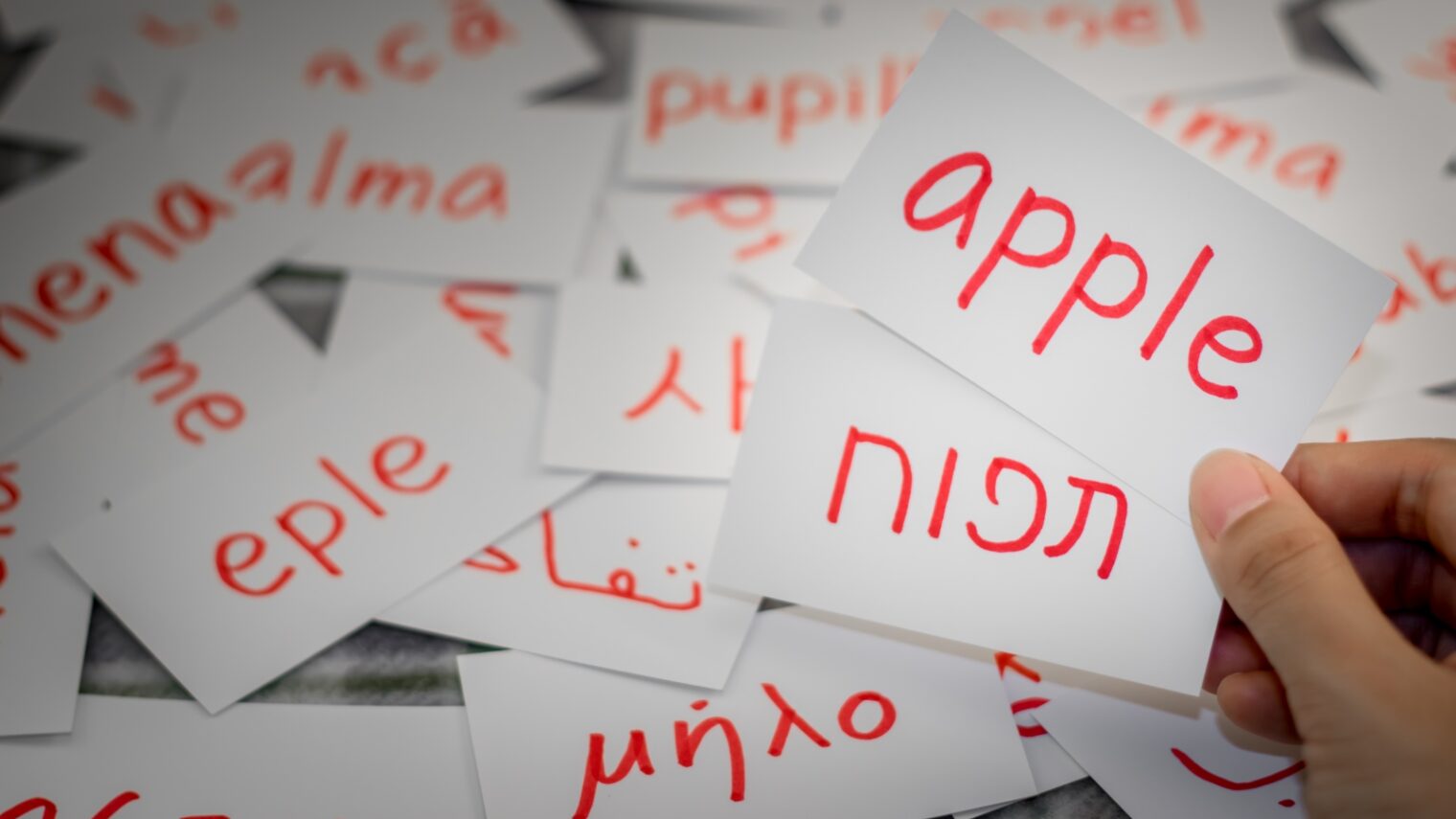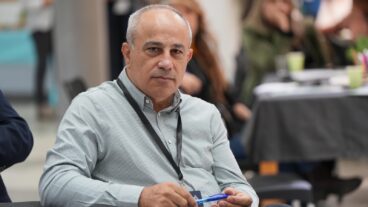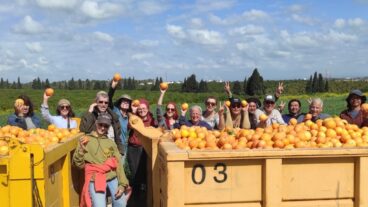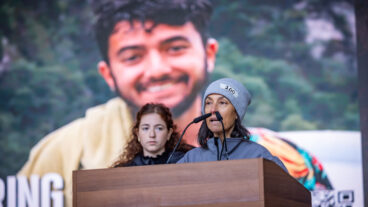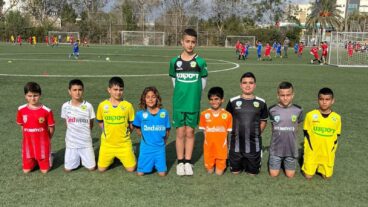“Anna,” a preschooler in the Israeli city of Bat Yam, was thought to be cognitively impaired because testing her in Hebrew showed her cognitive skills lagging behind her classmates. But when retested in her home language, Russian, she was found to be normal.
About half of all Israeli children speak a different language at home than in school, making Israel possibly the world’s best “laboratory” for researching the fascinating but still little-understood phenomenon of growing up with two or more spoken languages.
One important Israeli discovery is that comparing bilingual kids like Anna to monolingual children is like comparing apples to pears, says Bar-Ilan University Prof. Sharon Armon-Lotem.
For two decades, her lab has studied language-acquisition processes of Israeli preschoolers from English-, Russian- and Amharic-speaking homes.
Roughly 20 percent of children entering first grade in Israeli secular public schools come from immigrant homes in which the dominant language is not Hebrew. The largest cohort is Russian-speakers, numbering about 1.2 million out of an overall Israeli population of 8.7 million.
Adding more than a million Israeli households where Arabic, Yiddish or African languages are spoken, the percentage of bilingual children climbs to as high as 50% of the general population, Armon-Lotem tells ISRAEL21c.
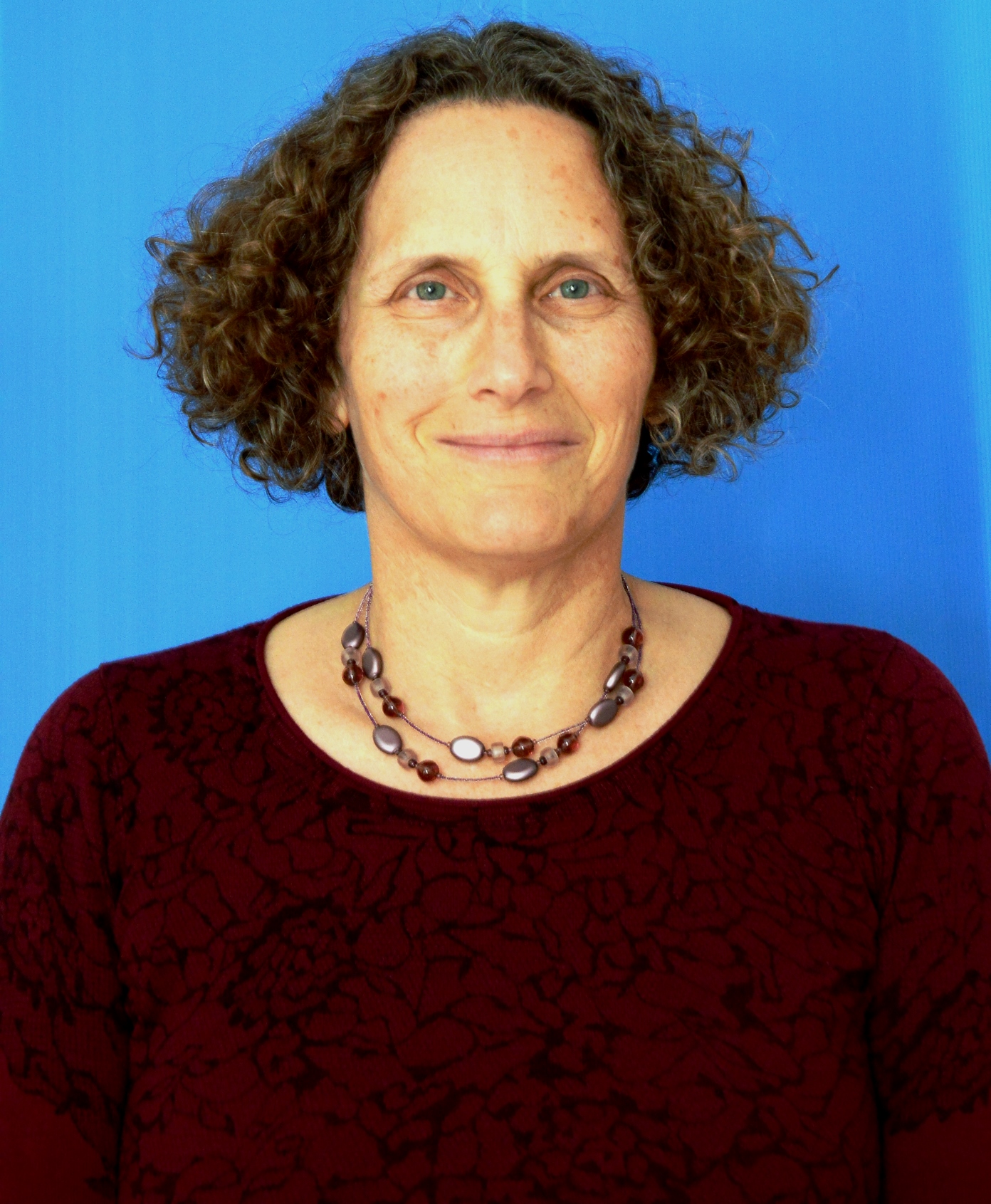
To evaluate bilingualism properly, one must understand that children who grow up speaking two or more languages in everyday life are not using the same brain processes as do monolingual children learning a second language in school, say Armon-Lotem and other Israeli experts.
And if bilingual children like Anna initially have a smaller Hebrew vocabulary, they have better syntax and concept-generation skills in both languages.
Overall, they develop language no differently than monolingual peers – unless they have Developmental Language Disorder (DLD), an area where Israeli research is world renowned.
What is normal?
DLD, estimated to affect 5-7% of both monolingual and bilingual children, causes dramatic delays in language acquisition not related to other impairments. DLD might manifest differently in each of a child’s two languages, but usually shows up as difficulty with word retrieval and grammar.
Since these same phenomena can happen in typically developing bilingual children as they learn the majority language, bilingual children with and without DLD are often misdiagnosed.
Armon-Lotem emphasizes that bilingualism does not lead to impairment.
From 2009 to 2013, she led a network of researchers from 26 European and five non-European countries in formulating standards for characterizing typical bilingual development and identifying atypical bilingual development in over 30 language pairs.
Research by Natalia Meir in Armon-Lotem’s lab was the first to show that it is possible to disentangle typical and impaired language development, and with 90% accuracy.
“We’ve made a lot of progress in this area in Israel,” says Prof. Joel Walters, professor emeritus of linguistics at Bar-Ilan and now chair of the department of communication disorders at Hadassah Academic College in Jerusalem, which hosts hundreds of specialists at its annual conference on communication disorders in multilingual and multicultural populations.
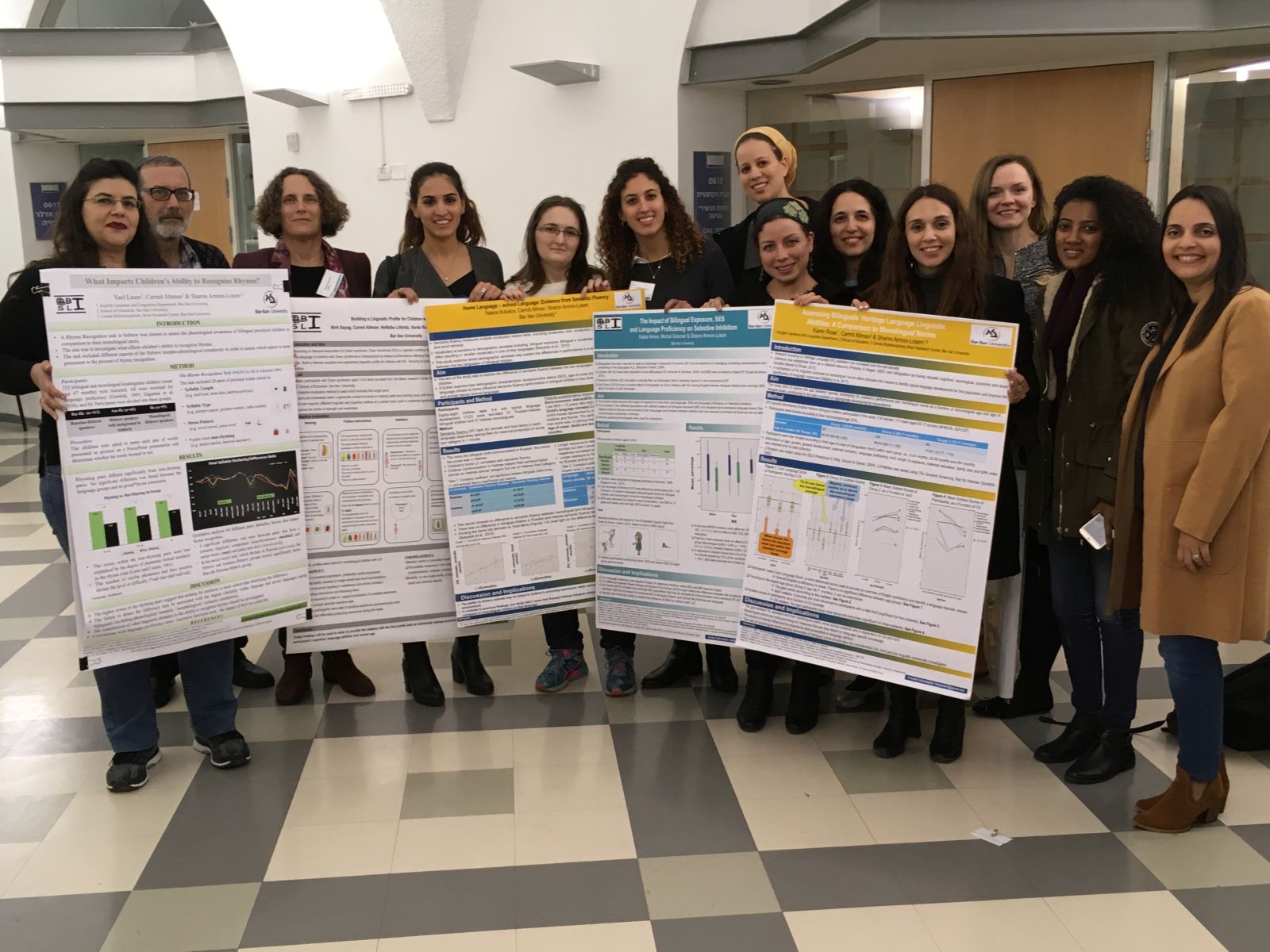
Codeswitching
Walters’ study of the processes underlying how the brain merges two or more languages into a single utterance is informed by recent brain imaging of bilinguals.
One of his focuses is “codeswitching” –when a bilingual speaker starts a sentence or word in one language and switches to the other.
“Codeswitching was once thought of as a random phenomenon but actually it’s very systematic and occurs in sentences, phrases, and even within words,” Walters tells ISRAEL21c.
An English-Hebrew bilingual child might tell her sister “muzi,” merging the English word “move” with the Hebrew “zuzi.”
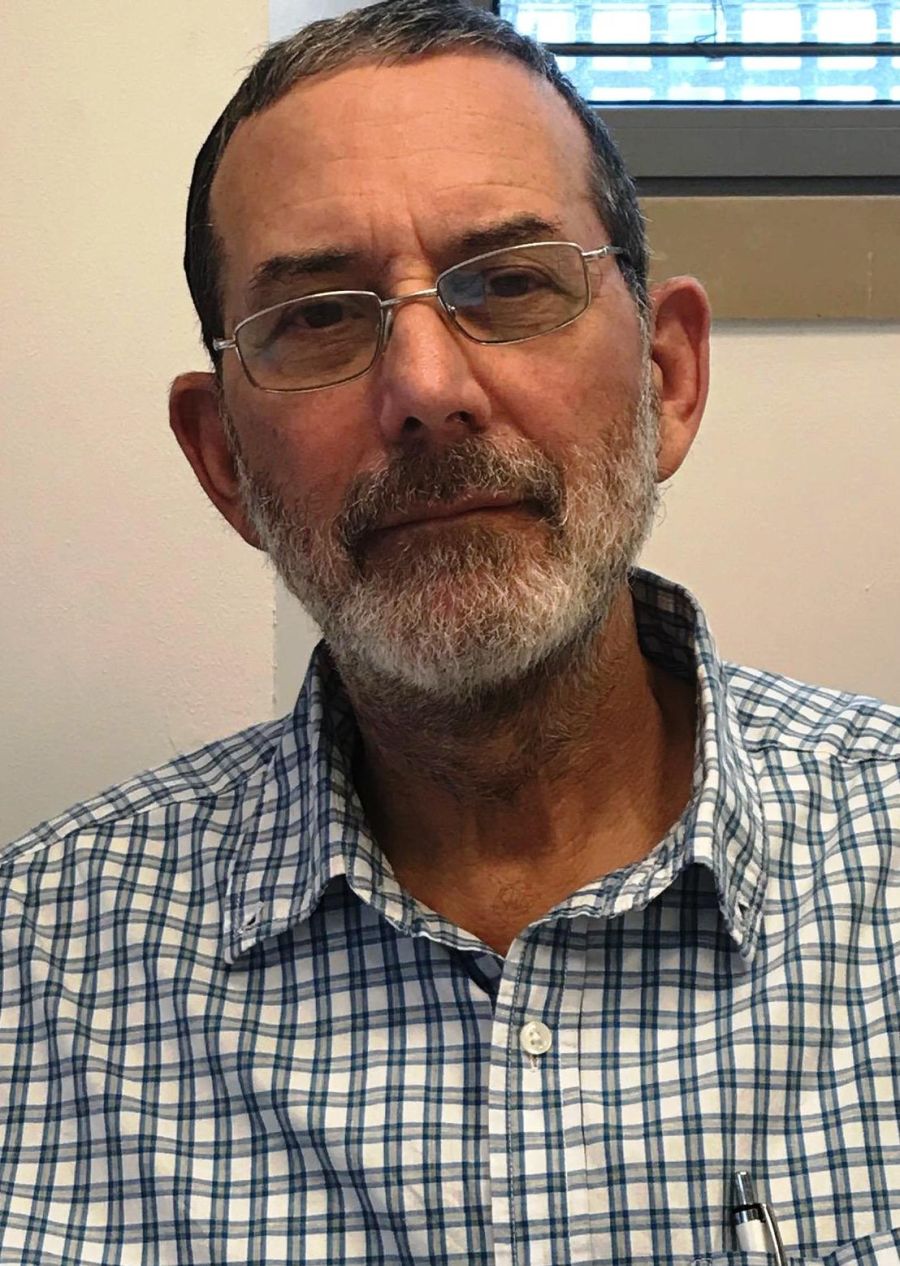
Walters and two co-authors recently published in the International Journal of Bilingualism about their study of Russian-Hebrew bilingual six-year-olds asked to retell a Russian story to a Hebrew-speaking puppet, a Hebrew story to a Russian-speaking puppet and a codeswitched story to a bilingual puppet.
The children were also asked to respond to conversational questions asked in Russian, Hebrew and codeswitched speech about holidays and activities at home and in preschool.
In both tasks, the children did more codeswitching from Russian to Hebrew, “because that’s the language of school and street and that’s the language that will help them integrate socially.” However, in children with impaired language development the directionality is not as predictable, says Walters.
As Israeli researchers formulate better ways of evaluating and treating bilingual children with DLD, Armon-Lotem is planning to establish a global database of voice files sent from clinicians and preschool teachers who work with bilingual children in different language pairs. Data scientists at Bar-Ilan will use new methods in machine learning and big data to better identify existing markers of DLD and possibly find new markers.
Am I Russian or Israeli?
Carmit Altman of Bar-Ilan’s School Counseling & Child Development Programs studies the social impact of growing up bilingual, looking at family language policy — what language parents want their child to speak and how they enforce that preference.
One of her group’s frequently cited studies, published in 2014, examined the language policy of 65 Israeli families raising their children in Russian. They found three main approaches: parents with a strict policy of speaking only Russian at home; parents who don’t forbid Hebrew at home and sometimes encourage it; and those who actively promote both Hebrew and Russian at home for speaking and reading.
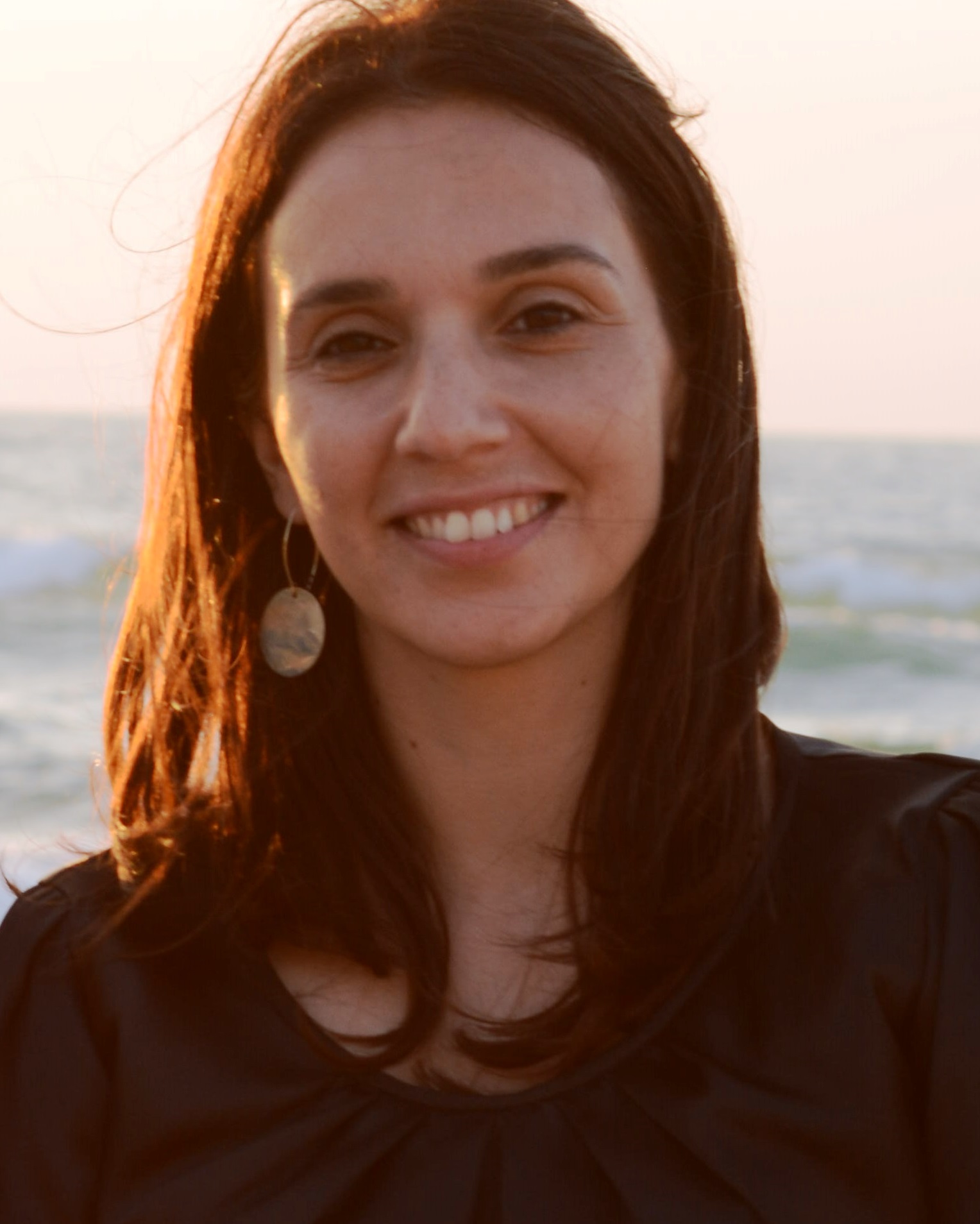
They predicted the strictest language policy would result in the best performance in Russian but the middle group performed just as well. Children from this group also showed an advantage in Hebrew in tasks predictive of future Hebrew literacy skills. “In syntax, all the kids did better in Hebrew than in Russian, with no group differences,” Altman tells ISRAEL21c.
Her lab also studies how bilingual children and their parents perceive their children’s language abilities, and their sociolinguistic identity and preferences. They invented a “magic ladder” scale on which preschoolers can attach happy and sad magnet faces to rate their agreement with statements such as “I speak Hebrew well.”
Parents of both English-Hebrew and Russian-Hebrew bilingual children think their children prefer Hebrew, but the kids say they prefer their home language, Altman found. And while the kids consider themselves hyphenated Israelis, their parents consider them totally Israeli.
There were differences in performance perception. “In Russian-Hebrew families, both children and parents think the children perform similarly in Russian and Hebrew. In English-Hebrew families, children feel they perform better in English while parents think the children have similar abilities in both languages,” says Altman.
In collaboration with Armon-Lotem, her group is developing tools to help researchers understand these differences and to help preschool teachers detect which bilingual children may need a DLD evaluation.
Advantages of bilingualism
The ability to speak more than one language is widely accepted as beneficial in ways from the practical (business, academics, travel) to the medical (possibly delaying symptoms of dementia).
When Altman was doing a post-doc in New York, she and her husband spoke Hebrew to their children at home. She feels that raising kids bilingually “is a gift you can give your child for life” and that cross-generational communication is one strong motivation for doing so.
“Having more than one language and more than one culture is definitely a huge advantage in life,” agrees Armon-Lotem.
It is less clear whether bilingualism sharpens “executive functions” such as shifting attention and inhibiting instructions, as was believed in past decades.
“In one study we found that English-Hebrew bilingual children with DLD show an advantage in executive function over monolingual children with DLD,” says Armon-Lotem. “But we didn’t find the same in Russian-Hebrew bilinguals. We might be able to find cognitive advantages for certain populations at certain age ranges and within certain tasks.”
She and her colleagues are beginning to study bilingualism in children with autism and Down syndrome; and will provide tools to help bilingual preschool children, including Eritrean asylum-seekers in Jerusalem, tell coherent stories in Hebrew and their home language.
A conference on the scientific and societal contribution of research in multicultural and multilingual communities is planned (in English) on June 4-6, 2018, to launch the Israeli branch of Bilingualism Matters at Bar-Ilan University. For information, click here.




